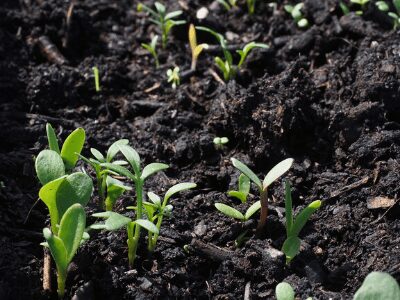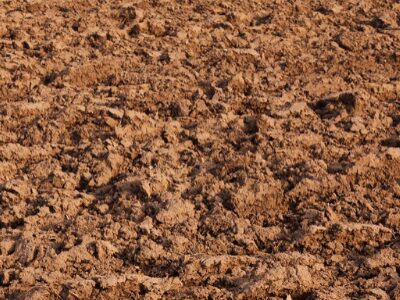
Introduction
The following knowledge relates to Indian soils and their types. It also describes suitable crops for various types of soil as well as areas of these soils.
What is Soil?
Soil can be described as the ultimate layer of the earth’s crust that plays an important role in growing food and trees. It includes rocks, organic matter (humus), water, gases, and air.
Soil Formation
How did soil form? Well, soil formation is a very long process and the weathering of the rocks into small fragments finally starts. The soil originates from rocks (parent material), typically created when the rocks are exposed to the atmosphere during the physical and chemical decomposition process. The soil properties are determined by parent material (usually rocks) and by the phase of soil formation. Based on their composition, the soils in India are divided into 2 broad categories.
1. Residual Soils
2. Transported Soils
Soil Types – Factors that Determines (Affect) Soil Formation:
There are certain factors that determine the soil types found in India.
1. Topography
2. Climate
3. Parent Materials
4. Organisms
5. Time
Soil Types – Soil Profile and Horizon: As we know soils are composed of layers also known as “Horizons.” Those composed of layers (horizons) form a soil profile. The soil profile is showing the full history and ingredients of soil formation. A soil profile is typically composed of 6 horizons.
1. o (organic or humas)
2. A (Top Soil)
3. E (Eluviated layer)
4. B (Subsoil)
5. C (Parent Material)
6. R (Bedrock)
Soil Types – Soil Minerals: The soil consists of primary and secondary minerals.
1. Primary Minerals – Calcium, Sodium, Aluminium, Magnesium, and Iron.
2. Secondary Minerals – Clay and Mineral Oxides.
Functions of Soil
Soil plays a significant role in life on Earth and has key functions.
- Soil functions as a tool for ecosystem plant production.
- Soil is considered a modification of the Earth’s (climate) atmosphere.
- The soil will store, purify and provide the poor with water.
- The soil has a natural habitat and the basis for the survival of life.
Soil Types in India:- There are several forms of soil present in the Indian continent. Every type of soil has unique features and is ideal for growing only a certain type of crop.
1. Alluvial Soils

Characteristics – Such soils are rich nutrients, such as phosphoric acid and organic (humus) matter. We are low in both nitrogen and potash, however. Alluvial soils are a blend of clay and (loam) sand. Such soils appear to be more sandy and can drain property faster than many other soils.
Suitable Crops of Alluvial Soils – In these soils under ideal irrigation, tobacco, cotton, rice, wheat, bajra, sorghum (jowar), pea, pigeon pea, chickpea, black gram, green gram, soya, groundnut, mustard, linseed, sesame, barley, jute, maize, all oilseeds, vegetables, and fruits are suitable.
2. Black Soil

Characteristics – Black soils are rich in aluminum, iron, lime, magnesium and. Their phosphorus, nitrogen, and humus (organic matter) are weak though. Typically during soil formation, this soil gets its black color from various salts or from humus. Black soils contain a significant quantity of clay but are often sandy in the country’s hills. When wet, the black soils become sticky and develop large cracks during the dry season.
Suitable Crops of Black Soils – The moisture of the black soil is very strong hence it is excellent for cotton growing. This is also known popularly as black cotton soil. In these soils, however, there are many other crops that can be grown; rice and sugar cane, wheat, jowar, linseed, sunflower, cereal crops, citrus fruits, tomatoes, tobacco, groundnut, any crops and millets of oilseed.
3. Red Soil

Characteristics – Owing to the presence of iron oxide these soils are red in color. These are formed due to metamorphic rocks being weathered. These soils are sandy and mildly acidic, and potash-rich. They are however very low in lime, phosphorus, phosphorous, magnesium, organic (humus) matter.
Suitable Crops of Red and Yellow Soils – Under ideal irrigation, rice, wheat, sugarcane, maize/corn, groundnut, ragi (finger millet) and potato, oilseeds, pulses, millets and fruit such as mango, orange, citrus, and vegetables can be grown.
4. Laterite Soil

Characteristics – In fact, these soils are acidic and low in humus (organic matter), phosphorus, nitrogen, and calcium. Laterite soils are highly iron-rich.
Suitable Crops of Laterite Soils – These soils are not very fertile, and are used in growing cotton, growing rice, growing wheat, growing pulses, growing tea, growing coffee, growing rubber, growing coconut and growing cashews. Owing to the presence of large quantities of iron, these soils are often used to make bricks.
5. Arid Soil

Characteristics – Arid soils have low clay content and are sandy. These soils lack humus and humidity because of the heavy evaporation in arid regions. Owing to the high salt content, arid soils are saline in nature and low in nitrogen. They are however abundant in plant oil. Arid soils vary in color from red to gray.
Suitable Crops of Arid Soils – Any drought- and saline-tolerant crops like wheat, cotton, corn (maize), millets, pulses, and barley can grow.
6. Forest and Mountain Soil
Regions – One can find the Himalayan area, Western and Eastern Ghats and some parts of the peninsular plateau of this sort of soil.
Characteristics – This type of soil is rich in organic matter but low in nutrients like potash, phosphorus, and lime. In fact, certain soils are very acidic. Crops grown in these soils need the addition of the right fertilizers.
Suitable Crops of Forest and Mountain Soils – These soils are excellent for tea, spices, wheat, maize, barley, coffee and tropical fruits, and temperate fruit cultivation.
7. Desert Soil
Such soils are sandy and dry and contain some quantities of nitrogen which are ideal for good irrigation facilities for agriculture. In these soils generally, the only drought-resistant crops such as millet and barley can grow.
8. Other Soils:
Saline and Alkaline Soils: These soils are too poor in nutrients for productive agriculture, and too high in salt.
Marshy and Peaty Soils: Owing to their high acidic nature, marsh soils are not suitable for crop cultivation. Peaty soils are rich in salt and have healthy organic (humus) content. They are however deficient nutrients such as potash and phosphate. Located mainly at Kerala.
Soil Erosion and Impacts
Soil erosion is nothing more than washing out the top layer (horizon) of soil that needs more nutrients and organic matter (humus) to sustain the ecosystem. There are many causes of the erosion of this soil. Some of the natural factors are inundations, heavy floods, ice production. Other causes mane made involve plowing, crop shifting, deforestation, and overgrazing. The following results in soil erosion.
- Reduces water holding capacity
- Loss of nutrients
- Reduces water infiltration
- It doesn’t remove topsoil uniformly and it is not possible to apply fertilizers and chemicals.
Protecting from Soil Erosion: It is up to us to save the world from soil erosion.
- Changing Agriculture/farming practices
- Checking to overgraze
 Soil Testing
Soil Testing
Soil testing is conducted for soil sample analysis to assess nutrient content, structure, and other characteristics such as acidity or pH level. This method should be adapted to commercial crop growers before beginning a plantation. This soil test allows determining the deficiencies in nutrients and micro-nutrients so farmers can add these nutrients to make the soil fertile. Based on the results of soil tests, farmers can pick correct manures and fertilizers for better crop yields. Farmers should buy soil pH meters and test the acidic soil levels to determine soil pH. Also, this meter is particularly useful for indoor planting, container gardening, greenhouse / Polyhouse.
Hydroponics Farming: Read Here

 Soil Testing
Soil Testing




